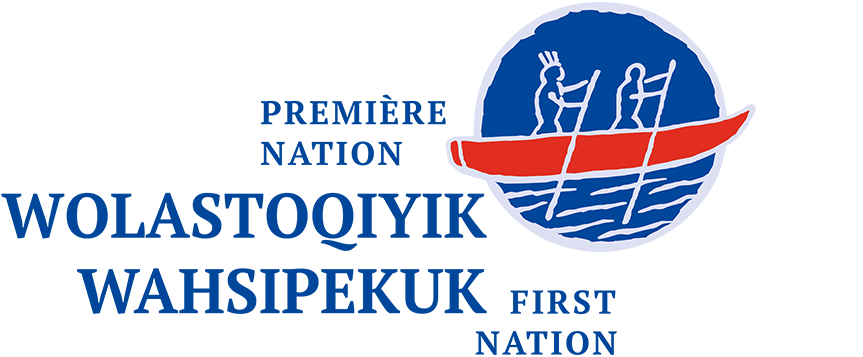

Home / Lessons / Level 1 / 1. Introduction
In this first lesson, you will overview the basics that will help you better situate and understand the wolastoqey language. You will also discover tools that will assist you throughout your learning journey
The Wolastoqey language has been passed down, evolved, and transformed from generation to generation for thousands of years on this territory. By delving into oral tradition, it becomes possible to better understand the richness of the teachings contained within the Wolastoqey language in relation to the values, principles, and traditions of our people. There exists a wide variety of narratives that have reached us. Some stories teach us about the origins of the Wolastoqiyik and our beautiful and bountiful river, the Wolastoq. Others recount how our ancestors received essential teachings, sometimes from Kewoluscap, sometimes from little people from the stars, or even from certain animals. Oral tradition narrates our territory, speaks of mythical characters, and evokes transformations undergone over centuries due to climate variations, migratory waves, and colonization, for example. This system of knowledge ensures the intergenerational transmission of essential knowledge for understanding what it means to be Wolastoqey. Learning the language of our ancestors allows us to get closer to these narratives and the oral nature that characterizes their transmission. Taking the time to engage with this essential aspect of our culture is also contributing to keeping our collective memory alive
Wolastoqewatu! Let’s speak Wolastoqey!
There are two ways to write Wolastoqey.
The Teeter alphabet was developed in the 1960s by an American linguist. It uses a letter not found in the usual alphabet: the schwa, also called the « turned e » written as « ə ».
The Newell-Hale alphabet was developed in the 1970s by a member of the Passamaquoddy Nation, with the assistance of another American linguist. This way of writing the language only uses the letters of the usual alphabet but in a limited number.
There are three main differences between the alphabets:
| Newell-Hale alphabet | Pronunciation | Teeter alphabet |
|---|---|---|
| o | « e » | ə |
| q | « gw » or « kw » | kw |
| u | « or » | o |
Example: Wolastoqey written in the Teeter alphabet is spelled Wəlastəkwey.
In this workbook, we use the Newell-Hale alphabet, which employs only the usual letters (not the ə). However, it’s useful to know how the Teeter alphabet works, as it’s used in several communities. Currently, neither alphabet dominates among speakers and learners of Wolastoqey.
If you wish to consult additional resources, here are some addresses:
When reading Wolastoqey, each letter is pronounced. This is not the case for all languages. In French, for example, the word « eau » has three letters but only the sound « o » is pronounced
The letters used to write Wolastoqey are not always pronounced as they are in French. Here are some examples of pronunciation differences between French and Wolastoqey:
With a little practice, pronouncing Wolastoqey quickly becomes a reflex.
The apostrophe at the beginning of a word is a result of the evolution of the wolastoqey language over time. It replaces a consonant that has disappeared over time and is no longer fully pronounced. The apostrophe affects the pronunciation of the first syllable of the following word.
Example: the word for eagle can be written in two ways: ‘cihpolakon or Kcihpolakon.
L’apostrophe nous indique qu’on prononcera « tchi » et non pas seulement « dji ».
The presence of the letter « H » in a word has an effect on the letter that follows it.
| Letter after « H » | Effect | Examples |
|---|---|---|
| « S » | The « S » is pronounced as « s » instead of the usual « z » sound | Wahsipekuk

|
| « K » | The « K » is pronounced as « k » instead of the usual hard « g » sound | Kcihkuk

|
| « P » | The « P » is pronounced as « p » instead of the usual « b » sound | Kotuhp ?

|
| « T » | The « T » is pronounced as « t » instead of the usual « d » sound | Nemaht

|
| « C » | The « C » is pronounced as « ch » instead of the usual « j » sound | Wenuhc

|
| « Q » | The « Q » is pronounced as « kw » instead of the usual « gw » sound | Akomahq

|
Wolastoqey is a language from the large linguistic family of Algonquian languages.
Like other languages in this family, it is a polysynthetic language. Words are constructed from root terms to which affixes are added: prefixes, infixes, and suffixes. A prefix is a particle added to the beginning of a word (for example, in French «in-» is a prefix indicating negation: habituel, inhabituel). A suffix is a particle added to the end of a word (for example, in French «-s» is a suffix indicating plural: un petit, des petits). An infix is a particle added inside a word.
Example:
| Nkansuhsok (my ancestors) | ||
|---|---|---|
| n- | kansuhs | -ok |
| indicates possession: my, mine (prefix) | ancestor (root of the word) | indicates plural (suffix) |
This type of linguistic structure allows for great flexibility and makes word construction in Wolastoqey relatively transparent.
The concept of gender in Wolastoqey does not refer to feminine and masculine like in French. Gender rather refers to the property of a word being «animate» or «inanimate.» Identifying the animate or inanimate gender of words is one of the greatest challenges in learning Wolastoqey. Similar to French, where the assignment of feminine or masculine gender is arbitrary (for instance, why is the word «table» feminine?), there are no definitive rules in Wolastoqey to determine animate or inanimate gender. You need to consult a speaker or a dictionary to find out if a word is animate or inanimate and then learn it
In this workbook, animate gender is indicated by (A) and inanimate gender by (I).
Like in French, there are personal pronouns (I, you, he/she, etc.) in Wolastoqey. Some are the same as in French (nil = I, kil = you), while others have differences (there are notably two forms of «we»). A particularity of Wolastoqey is that personal pronouns also indicate possession (mine, yours, etc.).
In this workbook, we only use the pronouns nil (I) and kil (you). They can be used in their full form; in this case, they are placed interchangeably before or after the verb. They also appear in abbreviated form, as prefixes to the verb:n- and k-.
| Personal pronouns in wolastoqey | Equivalents in English | Other meanings (indicating possession) | Notes |
|---|---|---|---|
| Nil | I, me | mine, my | |
| Kil | you | yours, your | |
| Nekom | he/she | his, her, hers | Neutral pronoun, can refer to a man or a woman. |
| Nilun | we | ours, our | Used when the person spoken to is not part of « us ». |
| Kilun | we | ours, our | Used when the person spoken to is part of « us ». |
| Kiluwaw | you (plural) | yours, your | There is no formal "you" in Wolastoqey. Kiluwaw always refers to multiple people. |
| Nekomaw | they | theirs, their | Neutral pronoun, can refer to men or women |
| VOWELS | ||
|---|---|---|
| Written | International phonetic alphabet (oral) | Examples in wolastoqey |
| a | [ɑ] father |
aha (yes) costaqs (shut up) tama (where) |
| e | [ɛ], sometimes [e] ten, fake |
qey (hello) mecopal (please) |
| i | [i], sometimes [ɪ] eager, pin |
opin (sit down) woliwon (thank you) |
| o | [ə] believe |
cipotu (maybe) ontama (no) |
| u | [u], sometimes [ʊ] pool, put |
kilun (un; you and me) tayuwek (when) cipotu (maybe) |
These consonants have two pronunciations depending on their location:
|
|||
| c | Between vowels | [d͡ʒ] Jason |
mecopal (please) |
| Next to a consonant | [t͡ ʃ] match |
apc oc (goodbye) |
|
| k | Between vowels | [ɡ] gallon |
kil (you) naka (and) |
| Next to a consonant | [k] kilo |
ckuwi (come here) tan kahk ? (how are you?) |
|
| p | Between vowels | [b] baby |
cipotu (maybe) |
| Next to a consonant | [p] apple |
apc oc (goodbye) |
|
| q | Between vowels | [ɡʷ] guacamole |
keq (what) wolastoqey |
| Next to a consonant | [kʷ] équation |
emqan (spoon) ‘qotatq (hundred) |
|
| s | Between vowels | [z] zebra |
possesom (star) |
| Next to a consonant | [s] passing |
mehsi (why) psi wen (everyone) |
|
| t | Between vowels | [d] adore |
cipotu (maybe) mahkut (dress) |
| Next to a consonant | [t] tall |
wolastoqey kotuwintu (he/she wants to sing) |
|
| SEMIVOWELS (GLIDES) | ||
|---|---|---|
| Written | International phonetic alphabet (oral) | Examples in wolastoqey |
| w | [w] wow |
wen (who) woliwon (thank you) |
| y | [j] yo-yo |
wolastoqey tayuwek (when) |
| CONSONANTS | ||
|---|---|---|
| Written | International phonetic alphabet (oral) | Examples in wolastoqey |
| h | [h] hahaha ! |
aha (yes) macaha (go away) |
| l | [l] lamb |
nil (I; me) mecopal (please) woliwon (thank you) |
| m | [m] mimosa |
ontama (no) aptelmultineweyal (rice) |
| n | [n] nature |
ontama (no) wen (who) nutaha (get out) |
| SONORITY | ||
|---|---|---|
| Sound Modifications | Symbol | Examples in wolastoqey |
| Vowel lengthening | ː placed after the prolonged vowel |
long (normal): [lõ] longue (prolonged): [lõːɡ] |
| Vowel shortening; in the case ofə, barely pronounced | ̆ placed above the short vowel |
heure (normal): [oer] petite (short): [pə̆tit] |
| Vowel accentuation, emphasis on this syllable | ˈ placed just before the stressed vowel |
Floride (in French): [flɔˈrid] Florida (in English): [ˈflorida] |
| Usually, lengthening a vowel indicates the emphasis is put on that syllable. In the event a stressed syllable also contains a prolonged vowel, the emphasis (symbol ‘) is not indicated. | ||
The purpose of this phonetic transcription is to make it easier for people to learn how to pronounce Wolastoqey. It’s not about enforcing a specific pronunciation but rather offering an extra tool for learners, based on the written language and the pronunciation of some native Wolastoqey speakers.
The symbols of the International Phonetic Alphabet (IPA) are used, allowing for a single phonetic transcription for both French and English-speaking learners. For better readability, the transcription is limited to a few elements of sound modification: vowel lengthening (ː), vowel shortening ( ̆ ), and vowel accentuation (‘).
The phonetic transcription is based on audio recordings found in three online tools:
When variations in pronunciation were noticed, the transcription reflects the pronunciation of the majority of speakers. If no dominant pronunciation could be identified among speakers, the transcription is based on the written word.
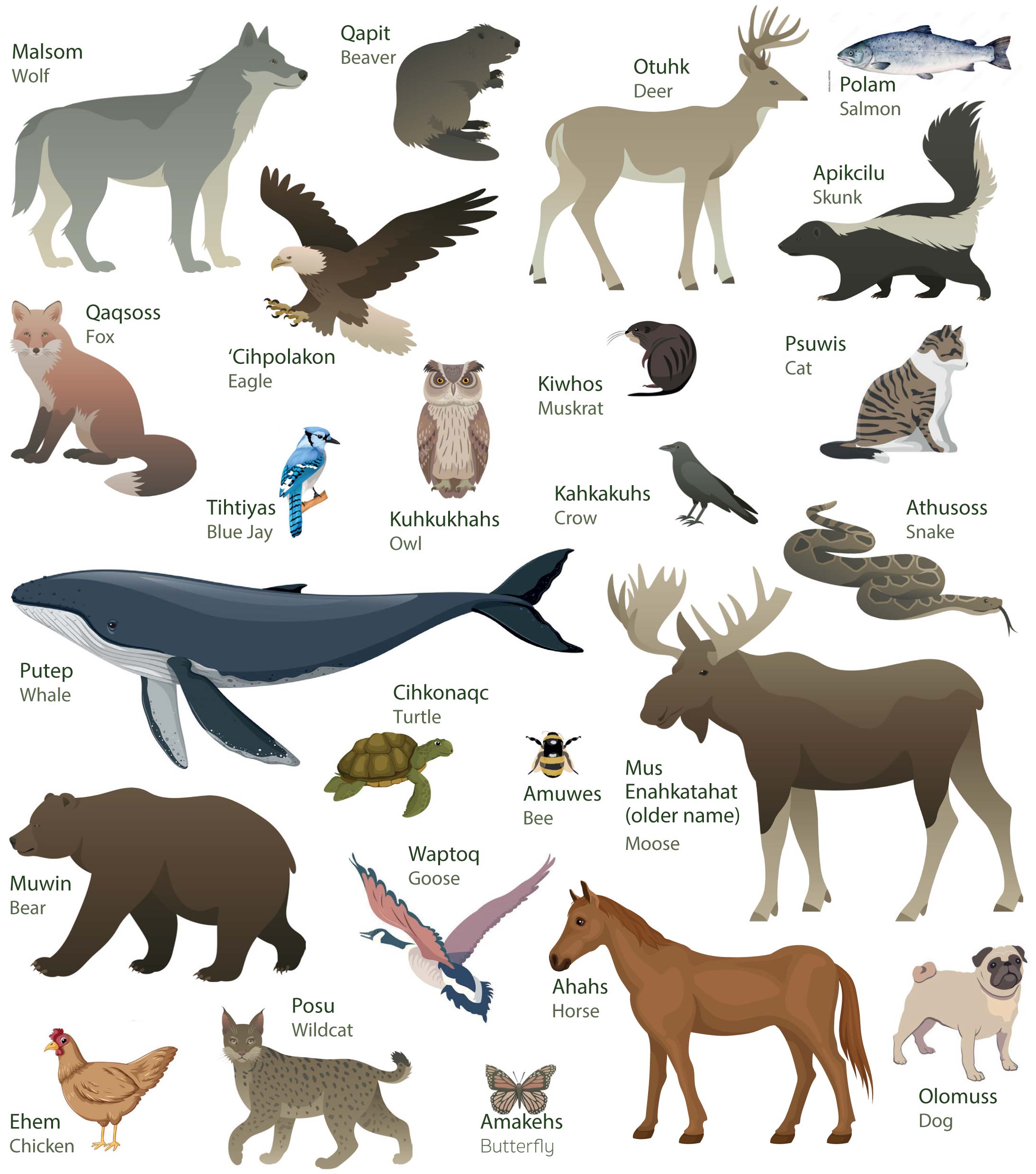
| Singular | Plural | English |
|---|---|---|
Ahahs

|
Ahahsuwok | Horse(s) |
Amakehs

|
Amakehsok | Butterfly(ies) |
Amuwes

|
Amuwesok | Bee(s) |
Apikcilu

|
Apikciluwiyik | Skunk(s) |
Athusoss

|
Athusossok | Snake(s) |
Cihkonaqc

|
Cihkonaqcok | Turtle(s) |
‘Cihpolakon

|
Cihpolakonok | Eagle(s) |
Ehem

|
Ehemuwok | Chicken(s) |
Kahkakuhs

|
Kahkakuhsok | Crow(s) |
Kiwhos

|
Kiwhosuwok | Muskrat(s) |
Kuhkukhahs

|
Kuhkukhahsok | Owl(s) |
Malsom

|
Malsomok | Wolf(s) |
Mus / Enahkatahat

|
Musok / Enahkatahahticik | Moose(s) |
Muwin

|
Muwinuwok | Bear(s) |
Olomuss

|
Olomussok | Dog(s) |
Otuhk

|
Otuhkok | Deer(s) |
Polam

|
Polamuwok | Salmon(s) |
Posum

|
Posumok | Wildcat(s) |
Psuwis

|
Psuwisok | Cat(s) |
Putep

|
Putepiyik | Whale(s) |
Qapit

|
Qapitiyik | Beaver(s) |
Qaqsoss

|
Qaqsossok | Fox(es) |
Tihtiyas

|
Tihtiyasok | Blue Jay(s) |
Waptoq

|
Waptoqiyik | Goose (Geese) |
| 1. The Wolastoqiyik have a rich oral tradition. TRUE. | |
| 2. The Wolastoqey language is spoken today in the same way it was spoken thousands of years ago. FALSE. The language evolves and transforms from generation to generation. | |
| 3. The oral tradition allows for the transmission of knowledge and ways of being. TRUE. | |
| 4. There are two ways to write in the Wolastoqey language. TRUE. In this course book, we use only one method, namely the Newell-Hale alphabet. However, both alphabets are acceptable; there is no one that is better than the other. | |
| 5. The letter ə is always used when writing in Wolastoqey. FALSE. The ə is used only when using the Teeter alphabet. | |
| 6. In Wolastoqey, some words are feminine, and others are masculine, like in French. FALSE. These concepts do not exist in Wolastoqey (but we still differentiate between male and female people and animals, as we do in English). In Wolastoqey, gender is not feminine or masculine, but rather animate or inanimate. | |
| 7. There is no exact rule to determine if a word is animate or inanimate. TRUE. There are tendencies, but no rule as such. One must check in a dictionary to know if a word is animate or inanimate. |
| 1. In the word putep, are the “P”s pronounced like “B”s? Aha! It’s because it’s preceded or followed by a vowel, and not next to another consonant or an apostrophe. | |
| 2. In the word kil, is the “K” pronounced like “K”? Ontama ! The “K” is pronounced as “G” because it’s followed by a vowel and there’s no apostrophe preceding it. | |
| 3. In the word amuwes, is the “S” pronounced like a “Z”? Aha ! It’s because it’s preceded by a vowel. | |
| 4. In the word qey, is the “Q” pronounced “KW”? Aha, according to the rule. However, most speakers pronounce it as “KW”, as if the word was spelled with an apostrophe: ‘qey. | |
| 5. In the word wolastoqey, is the “T” pronounced like a “T”? Aha ! It’s because it’s next to another consonant. | |
| 6. In the word wolastoqey, is the “Q” pronounced “GW”? Aha ! It’s because it’s between two vowels. | |
| 7. In the word mehsi, is the “S” pronounced like a “S”? Aha ! It’s because it follows the letter “H”. | |
| 8. In the word ‘cihpolakon, is the “C” pronounced “DJ” ([dʒ] in pronunciation table)? Ontama ! The apostrophe acts as a consonant. Therefore, the “C” is pronounced as “CH” ([t∫] in the pronunciation chart). |
Connect each statement to its alphabet.
| This alphabet uses the letter ə. | Alphabet |
| This alphabet uses the letter q. | Alphabet |
| This alphabet uses the letter kw. | Alphabet |
| This alphabet uses the letter u. | Alphabet |
| This alphabet was created by an Indigenous person. | Alphabet |
| This alphabet is the oldest of the two. | Alphabet |
| This alphabet consists only of the ones used in English | Alphabet |
Place the following words in the appropriate column.
Place the following words in the appropriate column. Cross out those that are a faulty mix of the two alphabets.
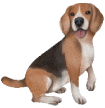
Keq liwisu weyossis ?
Liwisu

Keq liwisu weyossis ?
Liwisu

Keq liwisu weyossis ?
Liwisu

Keq liwisu weyossis ?
Liwisu
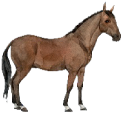
Keq liwisu weyossis ?
Liwisu

Keq liwisu weyossis ?
Liwisu

Keq liwisu weyossis ?
Liwisu

Keq liwisu weyossis ?
Liwisu

Keq liwisu weyossis ?
Liwisu

Keq liwisu weyossis ?
Liwisu
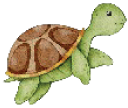
Keq liwisu weyossis ?
Liwisu
Find the Wolastoqey words that correspond to each of the elements on the list.
How it works: Click on the first letter of the word, then on the last to validate a word.
Words can overlap and go in these directions: → ↘ ↓.
Additional information for exercises solutions may appear in the Appendix of the PDF document.